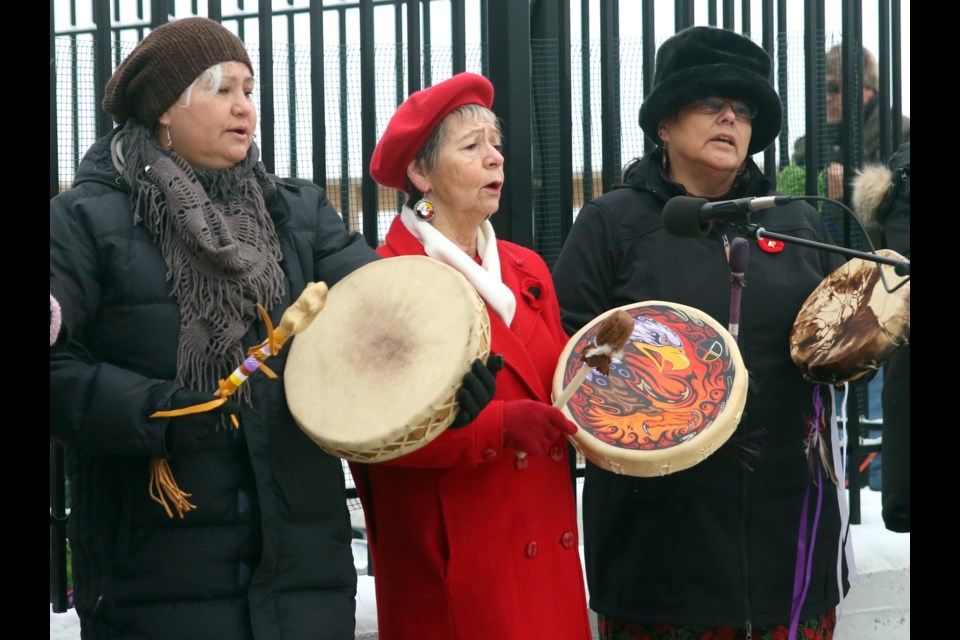FORT WILLIAM FIRST NATION - At the cold and snow covered outlook of Mount McKay, three women drummed and sang in front of the memorial commemorating First Nation soldiers who fought and died in the First and Second World Wars.
“The song is called the Giving Song,” said singer, Rita Fenton. “When the Sun Dancers were dancing, for four days they danced, and sometimes they wanted to give up, so this song came to them.”
“This is appropriate to the ceremony we had this morning, remembering the loved ones who fought in the war and gave up their lives,” Fenton continued.
It was a fitting tribute to close the Remembrance Day service at Mount McKay on Saturday, where people braved the cold temperatures to honour First Nations men and women who served their country.
The ceremony at Mount McKay was started in 1995 by Pte. Frank Banning, who served in France during the Second World War with the Lake Superior Scottish Regiment. Banning’s daughter, Catherine, along with members of the Banning family, continued to organize the ceremony after he passed away in 2010. Banning said the ceremony was a way for her father to deal with his post-traumatic stress disorder caused by the memories of the war.
“During his working career, he was too busy working and focusing on family that it didn’t bother him, then when he retired, it started to surface,” she said. “It was a way for him to come to terms with it by recognizing all of his friends and fallen soldiers.”
Since the first ceremony was held 23 years ago, large crowds continue to come and pay their respects, along with dignitaries and representatives from various community groups and organizations.
“It’s actually a real honour to see the crowds every year and they grow,” Banning said. “The community is really proud to share this mountain and share our memorial. That is why there are so many First Nations that participate with us. It’s gratifying to see that everybody embraces this service and that they know they are welcomed.”
This year marks the 100th anniversary of several key battles Canada participated in during the First World War, including the Battle of Vimy Ridge and the Battle of Passchendaele, the harrowing details of which were shared during the service.
“I tried to ensure there was a lot of educational factors for the community members, and most importantly for the children, so they understand the sacrifices and the importance of the memorial, how many people passed away in foreign lands and never repatriated to the country,” Banning said.
More than 4,000 First Nations people served during the First World War and more than 3,000 during the Second World War. Many would go on to earn accommodations for acts of bravery when facing a determined enemy. However, after returning to Canada, First Nation contributions were often overlooked.
“For many years, it wasn’t recognized,” Banning said. “For a lot of years when they returned from war, they didn’t have the same rights as non-Aboriginals when they returned. This is really important to us that they get recognized.”
And every year, members of Fort William First Nation who fought and died for their country, continue to be remembered and recognized, through moments of silence, reflection, and song.
“It means a lot to sing,” Fenton said. “Two of my uncles died in the wars from Fort William First Nation, as well as family members from other community members. It’s very touching, because it brings us to remember, to remember those who have fought for our country.”
